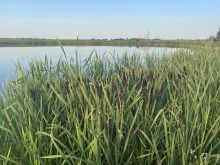WINNIPEG – Canadian oilseed crushers worry the detection of Asian soybean rust in the United States could mean stricter rules for soybeans they import to make oil and livestock feed.
Canadian regulators were considering more inspection for U.S. soybean imports before the first soy rust case was found in Louisiana Nov. 10, said Bob Broeska, president of the Canadian Oilseed Processors Association.
“We’re working with (the Canadian Food Inspection Agency), trying to make sure they don’t implement too stringent an inspection process that would inhibit trade,” Broeska said.
Read Also

Bio-fumigation may become new use for mustard
Mustard is great on hot dogs, but innovators in Western Canada have developed a new mustard variety for a different market — bio-fumigation.
Canada imported 640,000 tonnes of soybeans in the year ending Aug. 31, 2004, mainly from the U.S.
The beans cannot infect Canadian fields, Broeska said, because they are shipped directly to processing plants, mainly in southern Ontario, owned by Archer Daniels Midland and Bunge Ltd.
U.S. officials said the yield-limiting disease would likely spread, but they did not know how prevalent the rust was nor how quickly it would travel.
The spores of the fungus can travel long distances by the wind, which makes it difficult for regulators to control, said Steve Cote with the CFIA.
“The only thing that we can do is try to limit the manmade spread of this disease, and that is regulating imports of grain or soybeans if we determine that there is a risk.”
The CFIA could require imports to be certified as free of plant debris that can harbour the fungus, Cote said.
“I doubt that we’ll go down that road, depending on the extent of infestation in the United States,” he said, adding the agency will determine whether more rules are needed after an evaluation by the U.S. Animal and Plant Health Inspection Service.
The disease is unlikely to survive severe Canadian winters because it needs green plant material as a host, said Albert Tenuta, a plant pathologist with the Ontario government.
But rust could slash Ontario yields 10-20 percent in some years depending on wind patterns and how readily it takes hold in the southern U.S., he said.
More than three-quarters of Canada’s projected 2.9 million tonne soybean crop comes from Ontario, making it a fraction of the 84.6 million tonne U.S. harvest.
The $600 million crop is crushed for its vegetable oil and meal, which is fed to livestock. About a third of Ontario’s crop is exported, mainly to Asia and Europe for use in food.
Farmers can reduce the yield impact with fungicides, which Tenuta estimated could cost $12-$20 per acre.
“Any cost is significant to producers when the margins are tight,” he said.
Canada’s Pest Management Regulatory Agency has reviewed four fungicides to fight rust, and has approved them for emergency use if required, spokesperson Chris Krepski said.














